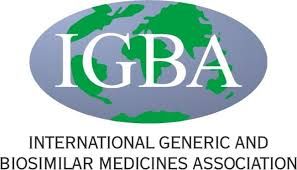- Bone Health
- Immunology
- Hematology
- Respiratory
- Dermatology
- Diabetes
- Gastroenterology
- Neurology
- Oncology
- Ophthalmology
- Rare Disease
- Rheumatology
IGBA Describes Competitive Economics of Biosimilars Industry
Kicking off Global Biosimilars Week, the International Generic and Biosimilar Medicines Association (IGBA) released a blueprint detailing hurdles and opportunities for industry progress.
As biosimilars become more prevalent in countries across the globe, one question arises: Are the savings from these often lower-cost agents benefiting the health care consumer?
“When competition with biosimilars kicks in, there are no policies supporting the reinvestment of the savings into more patients having access,” said Suzette Kox, general secretary of the International Generic and Biosimilar Medicines Association (IGBA), at a webinar sponsored by the IGBA, a trade group of pharmaceutical developers and manufacturers. The occasion was the launch of a white paper the group called a blueprint for future development of the generic and biosimilar medicines industry.
“It is very complicated indeed how to ensure that the biosimilars which are approved and eventually become available on the market are really benefiting patients and the health care systems,” Kox said.
The problem of how to ensure savings and access appears in different forms. “We have more than 30 biosimilars registered in Brazil, but only 5 of them are available for our population, and these are focused on cancer treatments and rheumatic diseases,” said panelist Gustavo Santos, general manager of medicines and biological products at ANVISA, the Brazilian health regulatory agency.
Growing Expectations
In markets where many more biosimilars are available, there’s a growing expectation that manufacturers must participate in ensuring that generic and biosimilar availability is supported by “end-to-end solutions” that contribute to improved health outcomes, according to the IGBA white paper.
“Rather than acting as a supplier to this trend, industry should play a central role in developing these solutions….Generics and biosimilar companies should address the full continuum of care and effectively team up with diagnostics providers, health care providers, and technology companies to bring about patient-centric solutions,” authors of the paper wrote.
The white paper described a rapid advancement of biosimilar use over the past 5 years, which it said was supported by streamlining of regulatory guidance and “increasingly positive clinical experience.” In Germany, for example, biosimilar versions of adalimumab, bevacizumab, and rituximab have achieved 72%, 80%, and 85% market shares, respectively, according to the IGBA paper.
“Going forward, the market is expected to see continued double-digit growth with potential for the industry to scale-up significantly,” the authors wrote, but they said that would be conditional upon sustained development of the biosimilar market in the United States with favorable regulatory policy and increasing stakeholder acceptance.
Further opportunities for biosimilar development lie ahead with anticipated loss of exclusivity (patent protection) for multiple originator biologics, by which means biosimilar developers can diversify away from the core biologics that they have relied upon thus far, the authors wrote. More products in oncology and autoimmune diseases are possible.
“As a result, cumulative savings from biosimilars are expected to reach $285 billion globally over the next 5 years, with annual savings exceeding $100 billion in 2025 alone,” the report predicted.
The Competitive Climate
However, the competitive atmosphere is expected to grow more intense.
“Only early entrants [in a therapeutic drug category] have the potential to recover the significant investments made in product development.” Consequent to this, “Biosimilar launches have also witnessed accelerated price erosion curves across markets,” authors of the paper wrote.
They said recent anti–tumor necrosis factor biosimilars have upon launch seen price declines in the neighborhood of 25% when the first biosimilar arrived on market, but when multiple competitors enter the same market and are forced to outbid one another to obtain supply contracts, “erosion can reach up to 70% relatively quickly.”
“The sustained pricing pressure will require stringent containment of operating costs beyond what is bare minimum required by the industry to deliver high quality products, particularly in light of input cost raises,” the authors wrote. They expressed concerns about the long-term consequences of this economic pressure.
For biosimilar penetration into markets in emerging countries, cooperation is needed from regulators. Regulatory frameworks in some cases are not conducive to bringing biosimilars to market, approval processes may be too complex, approval timelines may not be well defined, and clinical study design requirements may be unclear, they wrote.
“While emerging markets represent a traditional growth opportunity and a key playing ground for improved access to medicines, they also present severe competitive and structural market challenges for generics and biosimilars companies,” authors of the report said.
The Center for Biosimilars® recently interviewed members of Medicines for Europe about their comprehensive review of European Union markets for biosimilars. This interview appears in 2 parts, the first of which is available at this link.
Newsletter
Where clinical, regulatory, and economic perspectives converge—sign up for Center for Biosimilars® emails to get expert insights on emerging treatment paradigms, biosimilar policy, and real-world outcomes that shape patient care.

